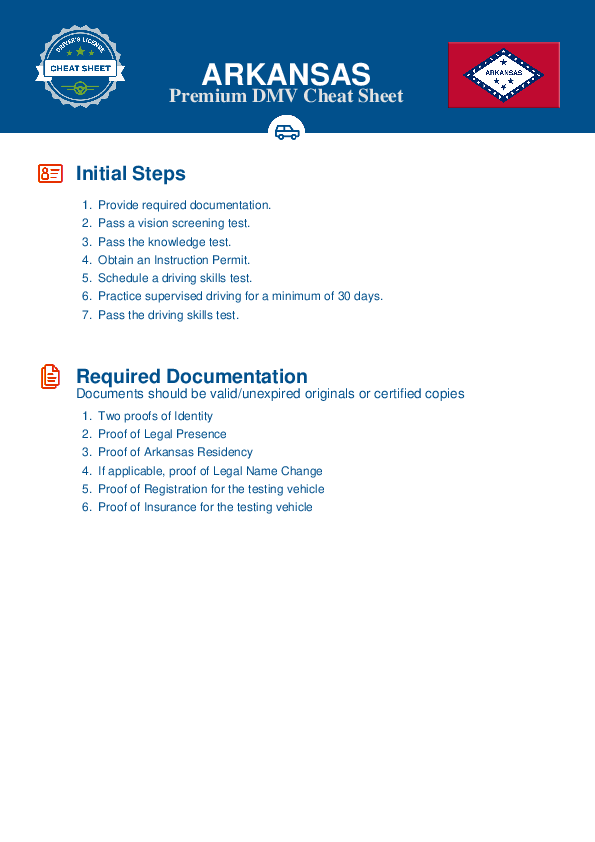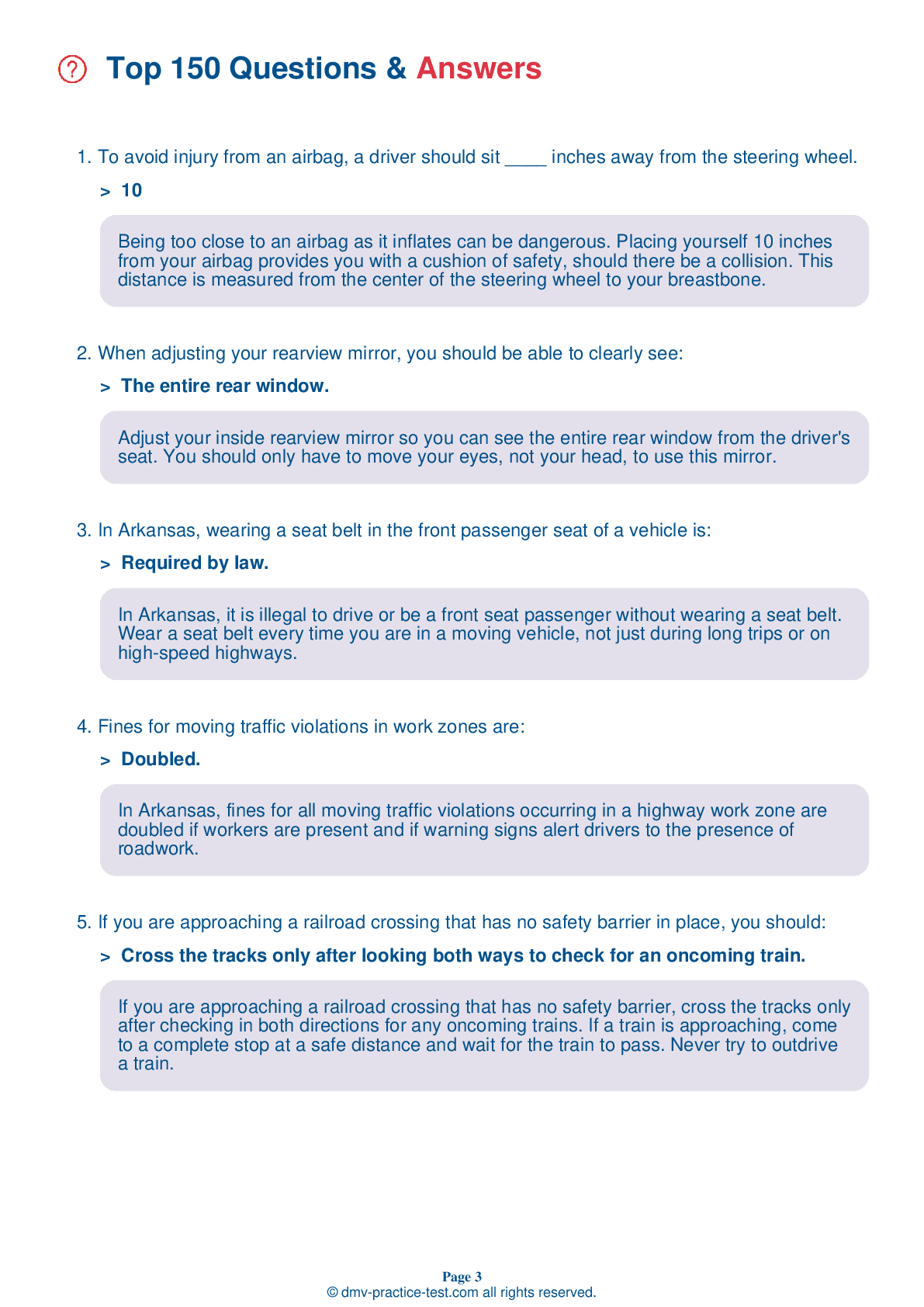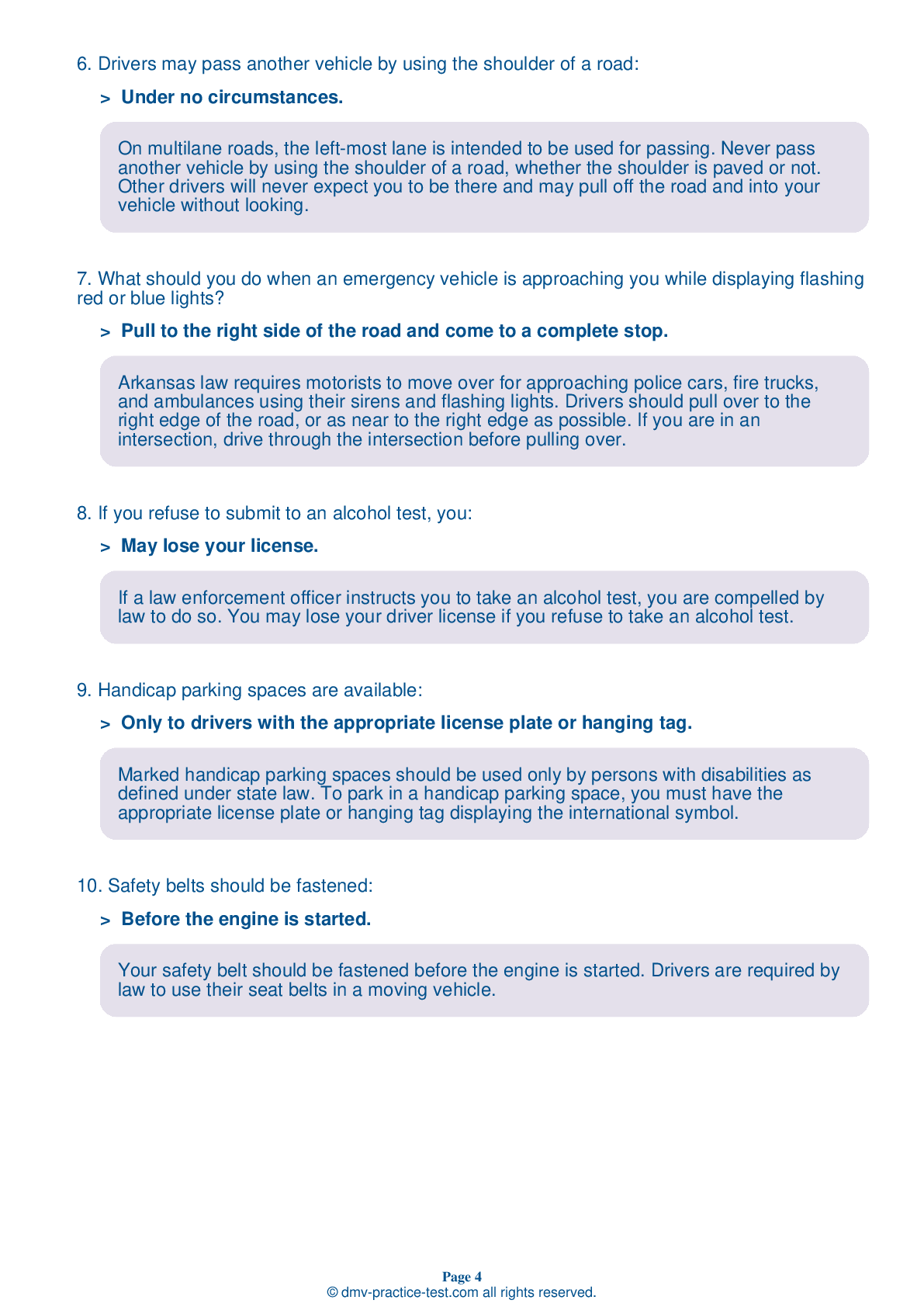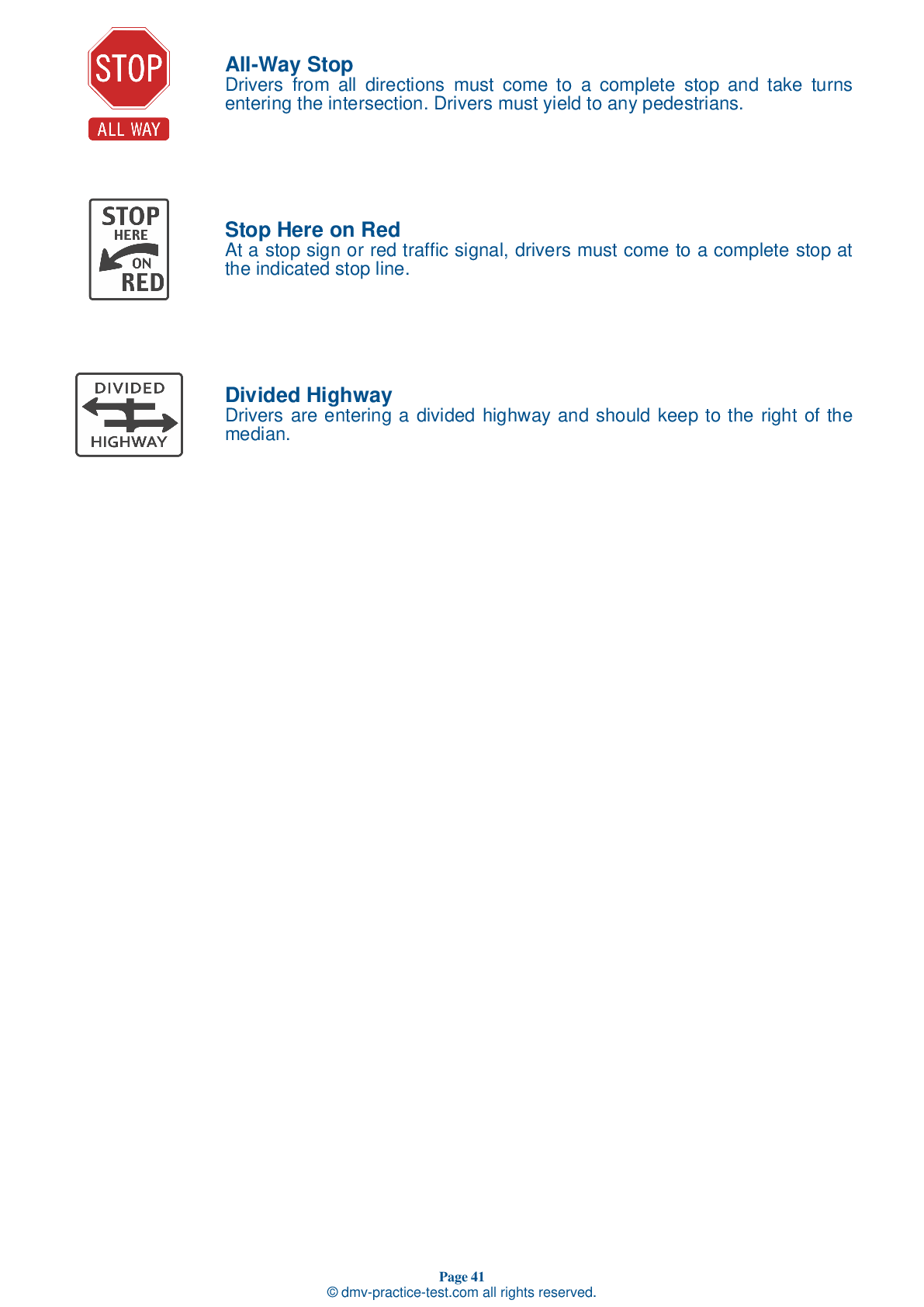FREE Arkansas DMV Practice Test #18
This Arkansas DMV practise tests was recently updated for January 2025. It includes questions based on the 2025 Arkansas Driver Handbook's most essential traffic signs and restrictions. Use actual questions that are very similar (often identical!) to the DMV driving permit test and driver's licence exam to study for the DMV driving permit test and driver's licence exam.
To help you remember the concepts, each practise test question includes a recommendation and explanation. The written component of the official DMV test will include questions about road rules, traffic signs, and driving statutes, as well as information from the Driver Handbook.
To receive the required passing grade, you must correctly answer 20 out of 25 questions. Take our DMV practise exam to help you prepare for your Arkansas instruction permit or driver's licence.
The DMV exam is available in multiple languages.
Using any form of testing aid will result in an automatic fail, and the DMV may take further action against your driver's licence, so don't do it.
1 . What can you do to reduce road rage?
To do your part to prevent road rage, you should follow laws, signs, signals, and pavement markings. Always signal your intention when changing lanes.
2 . A diamond-shaped sign means:
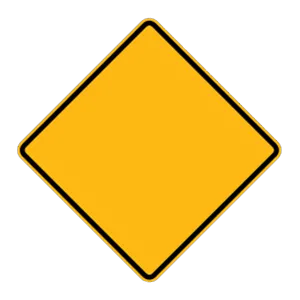
Diamond-shaped signs are used to warn drivers of special conditions or hazards ahead. They are typically yellow or orange in color.
3 . You enter a designated turn lane to make a left turn at an upcoming intersection. There is oncoming traffic. You should:
When making a left turn, you should always begin signaling about 100 feet before the turn. You should keep your front wheels aiming straight ahead until it is safe to start your turn. This ensures that you will not be pushed into oncoming traffic if another vehicle hits you from behind.
4 . It is more dangerous to drive at night than during the day because:
With decreased visibility and the glare of oncoming headlights, you cannot see as far ahead at night as you can during the day. Always use headlights and exercise caution when driving in the dark.
5 . When entering traffic after being parked at a curb, you:
Any time that you merge into city or highway traffic, you should wait for a gap in traffic large enough for your vehicle to get up to the speed of other traffic.
6 . If you want to enter the freeway but you don't see a gap in traffic, you should:
If you want to enter the freeway but do not see a space for your vehicle in traffic, slow down on the ramp to wait for a gap. Do not drive to the end of the ramp and wait for a gap or you will not have enough room to accelerate to the speed of traffic before entering the roadway.
7 . Highway pavement will be particularly treacherous and most slippery:
Pavement is particularly treacherous when it first begins to rain. Accumulations of dirt and oil mix with the rainwater, creating a greasy film on the roadway.
8 . If you experience a tire blowout:
If you experience a tire blowout, you should slow down gradually by taking your foot off of the accelerator. Don't apply the brakes until the vehicle has slowed considerably.
See the exact questions that will be on the 2025 Arkansas DMV exam.
99.2% of people who use the cheat sheet pass the FIRST TIME
LT gives us an insight on how the cheat sheet provided her with all the study questions she needed before taking her test.
Joe initially studied with the handbook and failed his test, he eventually found us online, studied and pass his test the first time around.
